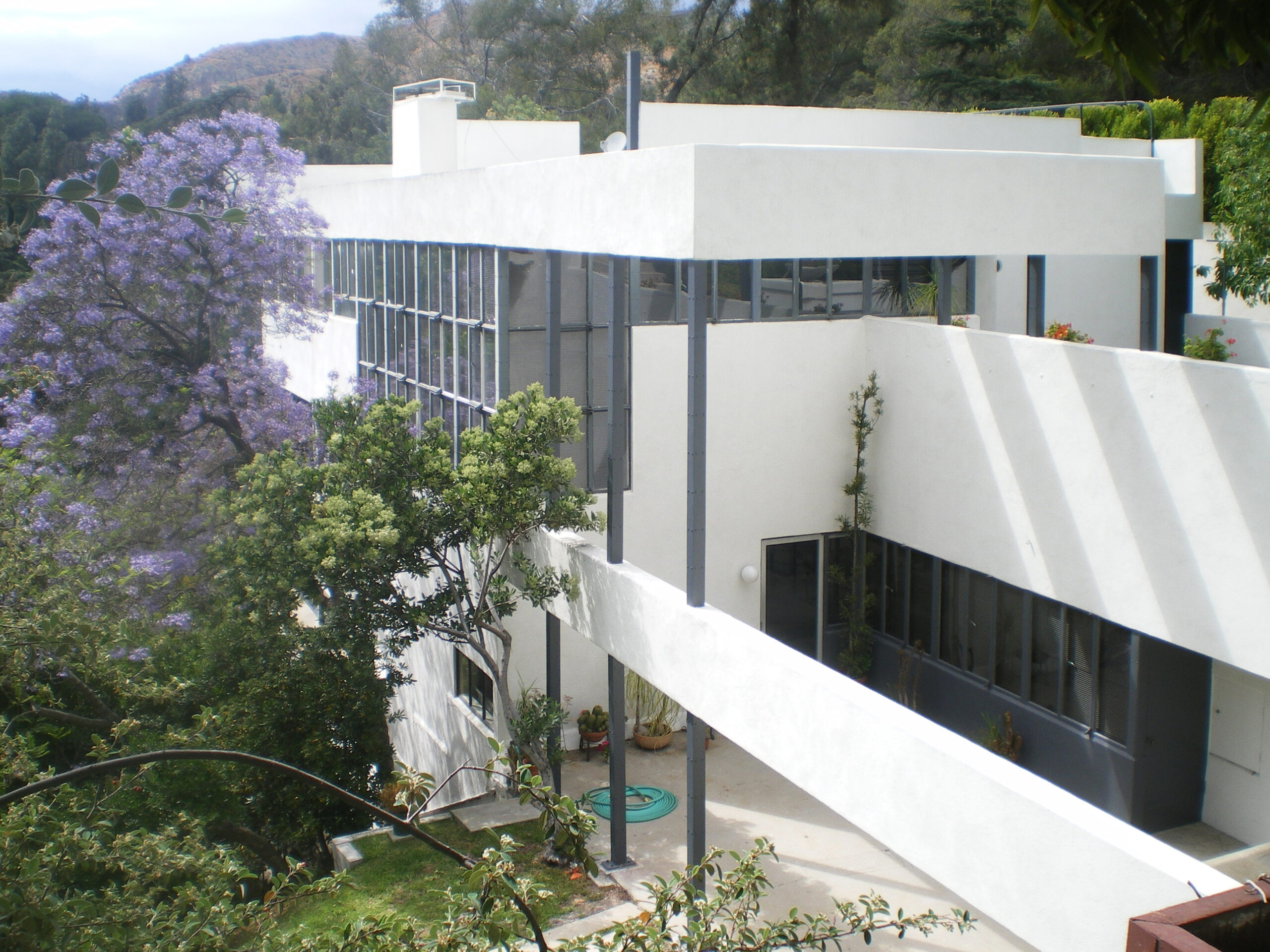During the early 20th century, architecture and its leading avant-garde thinkers utilized creative, and sometimes radical, ideas to solve the ills of society. Industrialization created dense and dirty cities. Diseases like tuberculosis were prevalent and wreaking havoc on the world economy and population. Sounds a lot like what we’re dealing with today. Searching for answers to these problems led to a new architectural style and brought awareness to how lifestyle and environment could affect health. People always say history repeats itself, so maybe we can look back to these modernist, health-conscious design features for ideas that could help us solve the health woes of today.
1. Entryway Hygiene
Villa Savoye entrance sink. Photo: Timothy Brown / Flickr / CC BY 2.0
Modernist icon Le Corbusier once said that the “house was a machine for living in.” He also stated that the most important elements of city planning are sky, space and trees. His recognition of this need for connection to nature is highly evident in the design of one of his most famous houses, Villa Savoye. Strip windows, roof gardens and an elevated main living platform above the automobile garage are all evidence of that. He also recognized the need to leave the dirty city behind when you entered the home and implemented something often thought of as odd: a sink at the entrance of the home. Given today’s pandemic, we could probably use one of these.
2. Fresh Air Porch
Paimio Santorium, 1928-1932. Photo: Gustaf Welin, Alvar Aalto Museum
Paimio Sanatorium is a former tuberculosis hospital designed by Finnish architect Alvar Aalto. Aalto delivered this modernist masterpiece early in his career and it would still be a great example of health-conscious design today. For instance, he thought of everything from moving lights outside of the field of view of a laid patient to custom designing the sinks to reduce noise. He used color theory to affect mood and provided outdoor terraces for sunlight and fresh air, as those things were believed to provide relief from tuberculosis. In addition, a porch at the top of the building optimized access to sunlight and fresh air.
3. Sunlight
Lovell House. Photo: User: Los Angeles / Wikimedia Commons / CC BY-SA 3.0
The Lovell House is a recognized monument in modernist architecture and helped initiate architect Richard Nuetra’s popularity. This house was designed for physician and passionate naturopath, Philip Lovell. Lovell wanted a home that aligned with his unique lifestyle and beliefs about health. Throughout his life, he advocated for things like access to fresh air, a vegetarian diet and daily sunbathing to ensure adequate vitamin D levels. Today’s population is no different. We often lack proper nutrition due to heavily processed foods and are also deficient in vitamin D. That being said, access to sunlight has been shown to increase levels of vitamin D as well as regulate circadian rhythms, making it an important factor in health-conscious design.
4. Reclining Chair
Reclining Chair. Photo: User: End User / Flickr / C BY-SA 2.0
At some point in their careers, most modernist architects designed a chair. And a lot of these chairs reclined. Le Corbusier created his infamous lounge chair; Alvar Aalto designed reclining porch chairs for patients to maintain views and allow for easier breathing; and the infamous Eames Chair remains popular to this day. Maybe it was the fascination with new ideas of leisure, or maybe it was an opposing reaction to over-stimulation of the day. Either way, purposeful rest, something that influenced modernist design, is something we could all use to improve our health and well-being.




